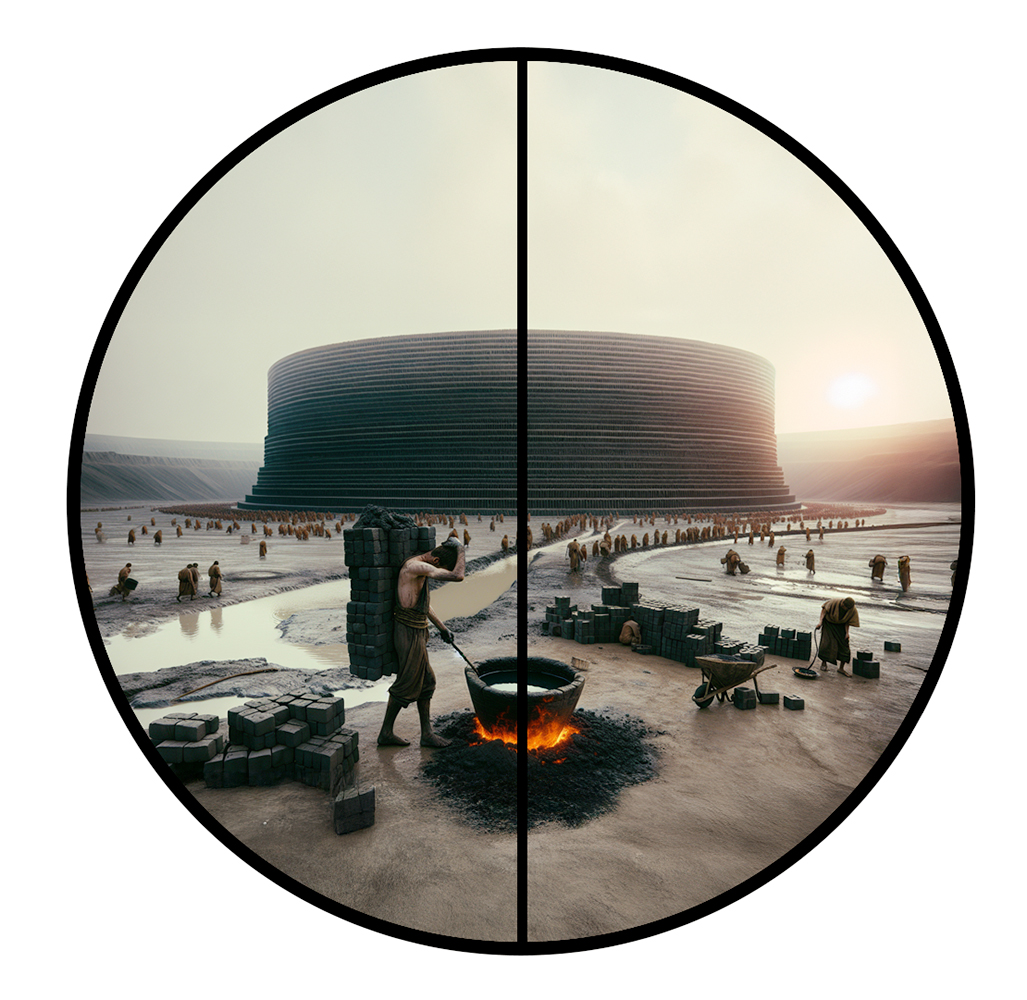 Genesis 11:3
Genesis 11:3

שרפה seraphah, Burning One
And they are saying, each man to the neighbor of Himself, "Come! We are white-washing bricks, and we are burning to the Seraphah!" And she is becoming for themselves the Whitened Brick for the stone. And the Bubbling Tar, he has become for themselves the Cement.
And they shall say a man to his neighbor, Come, we will make bricks, and we will burn to a burning, and brick shall be to them for stone, and potter's clay shall be to them for potter's clay.
And each one said to his neighbor, Come, let us make brick, and burning burn them. And they had brick for stone, and they had asphalt for mortar.
And they said to one another, “Come, let us make bricks, and burn them thoroughly.” And they had brick for stone, and bitumen for mortar.
And a man said to his neighbor, Come, let us make bricks and bake them with fire. And the brick was to them for stone, and their mortar was bitumen.
Footnotes
| 427 | The Neighbor ↔ Evil One Strong's #7451, rea. Evil, bad one. Strong’s #7453, rea. Friend, companion, fellow. Neighbor is a widely misunderstood word. See its primary definition in Exodus 33:11, “Yahweh has spoken toward Moses [Drawn-out], faces to faces, when a man is speaking toward his friend [ רע rea].” The Hebrew word רעהו (re'ehu) can mean both "his neighbor" or "his friend" and "his evil one", depending on the context. The root רעה (resh-ayin-heh) can refer to both companionship (as in "neighbor" or "friend") and to evil or harm in different constructions. In positive contexts, רעהו generally means "his neighbor" or "his friend", referring to someone close or friendly. However, when the context involves negative or harmful actions, the same root can evoke a sense of evil or damage.The precise meaning is usually clarified by the surrounding words and the overall tone of the text.
|
| 429 | White Strong’s #3835, laban. Verb, to be or become white. This is in the Qal 1st person collective plural form nilbenah נִלְבְּנָ֣ה. This form is only found here. The Hiphil is the causative form הִלְבִּ֖ינוּ hilbinu which would mean to make white or to whiten and that is not used here but is found in Joel 1:7, “…and my fig tree for a splintering, to strip off he has stripped her, and he has thrown, they have whitened her tendril branches.” |
| 430 | Strong’s #3843 lebanim. The noun is a feminine noun, lebanah, but given here for some reason in a masculine plural form. The feminine singular the White-one is used in the next sentence with a definite article. The root verb is laban #3843, to be white. This noun clearly represents something that is white. Interpreted as bricks, pavers, etc. |
| 431 | Strong’s #8313, saraph, to set on fire, actively burn something. |
| 432 | Seraphah. Hebrew #3843 לשרפה, to a fiery-one. From saraph; cremation -- burning. See Isaiah 9:5 where it is also found written. This is the feminine singular from of the masculine plural seraphim #8314, fiery serpents typically understood to be the poison or venomous kind. |
| 433 | Strong’s #2564, chemar. Fermenting/foaming-one Bitumen, tar, asphalt. Formed from the same stem as chomer (clay, bubbling-one), to bubble up, boil (#2560). Derivative of chamar, to ferment/foam, and chamor (male donkey) foaming-one. |
| 434 | Strong’s #2563, chomer. A homer. A general word signifying a measure, heap mainly of clay; symbolic of other things, i.e. bodies of men (jars of clay 2 Cor. 4:7, Rom. 9:21, Rev. 2:27), “And Samson said, With the jawbone of an ass, a heap [chomer] of two heaps [chomer-atayim], with the jaw of an ass have I slain a thousand men. From chamar; properly, a bubbling up, foaming, boiling. |